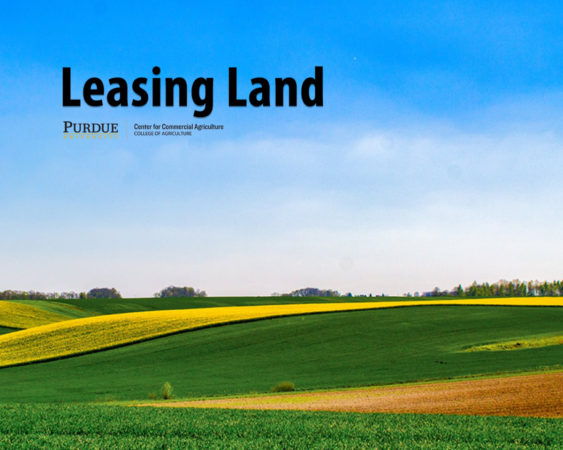June 8, 2019
Leasing Principles for Cropland
Deciding whether to lease or purchase land is one of the most important decisions made by farmers. An asset base that is too small makes it difficult for a farm to efficiently utilize labor, and machinery and equipment. An asset base that is too large often requires borrowing a large amount which may cause cash flow problems and financial stress. When examining the leasing option, a farm needs to decide, along with the landowner, whether they want to use a cash lease, a crop share lease, or a flexible cash lease. This article discusses lease principles that are relevant to these cropland leases.
Farm leases, at a minimum, should contain the following information: legal description of the land, term of the lease, amount of rent to paid or how rent will be computed if you are dealing with a crop share or flexible cash lease, names of owner and tenant, signature of all parties, dates and procedures for notification of lease renewal and cancellation, and a provision spelling out rights and responsibilities of each party. The objective of every lease should be to provide a fair and equitable return to both parties for the inputs they contribute to the total farm operation. A fair and equitable arrangement exists when both parties are paid for the use of their inputs according to the contribution those inputs make toward generating income.
Risk sharing varies considerably among the three lease types noted above. With a cash lease, price and production risk are borne by the tenant. With a crop share lease and most flexible cash leases, price and production risk are borne by both the tenant and owner. There is also risk associated with the term of the lease. Cash leases tend to adjust slowly to changes in the business climate while net returns for crop share and flexible cash leases typically change more rapidly.
For crop share leases, variable expenses that are yield increasing (e.g., fertilizer) should be shared in the same proportion as the crop share. As new technologies or management practices are adopted (e.g., no-till; cover crops), share arrangements need to be adjusted to reflect their impact on costs and returns.
At the termination of a lease, tenants and landowners should be compensated for the unexhausted portion of long-term investments. For example, lime applied to cropland typically lasts several years. If the tenant pays for the lime, then the lease should provide for a mechanism to compute the remaining value of the lime when the lease is terminated. Other investments may include irrigation, conservation improvements, grain bins, and/or buildings.
In closing, communication is extremely important. It is prudent for a tenant to provide updates of crop conditions throughout the year and make sure that crop shares and possible bonuses emanating from flexible cash leases are understood by both parties. Even though oral leases are common, they are not recommended. It is too easy for memories to fail, causing avoidable disagreements.
TEAM LINKS:
PART OF A SERIES:
RELATED RESOURCES
UPCOMING EVENTS
December 1 & 8, 2025
Join Purdue Extension for a two-part workshop designed to help you gain a clearer understanding of tax planning essentials. The first session on December 1 will focus on the fundamentals of farm taxes, with particular emphasis on strategies that can be used in a low net income year. The second session on December 8 will focus on key tax strategies and will allow plenty of time for questions. Registration cost is only $20.
Read MoreDecember 15, 2025
This program provides in-depth coverage of agricultural and farm tax issues. In addition to covering timely tax issues, we will cover disaster tax issues, depreciation and expensing farm assets, retirement planning for farms, and tax planning in low-income years. This year’s webinar will be co-taught by a team from Ohio State and Purdue Universities.
Read MoreJanuary 27 or 28, 2026
Farm Shield is more than a conference, it’s a commitment to helping agricultural families build resilience and plan for a secure future. Don’t miss this opportunity to protect your legacy!
Read More